
MYTH A paid review is any review you paid for
TRUTH There are three types of paid review. Here, I list 1 and 2 (good methods) and 3 (stay away).
- Professional editorial review service (Kirkus, SPR, BlueInk, Foreword, Indiereader, Reader’s Favorite) The reviews you buy direct from a professional review service should only be posted in your Editorial Reviews section as provided by Amazon for this purpose. They are considered a boost to your book sales by Amazon, who have now put customer reviews lower down “below the fold” and place Editorial Reviews at the top to invigorate sales. Trusted companies have reach. See below.
- Mailing List style Customer Reviews If you pay a service such as BookBub or SPR Bestseller to send out advertising emails to a huge list of readers, you should get Customer Reviews as a result. SPR guarantees a minimum number of reviews based on our percentage of return calculations. This is all fine with Amazon’s T+Cs because no contact is made between author and reviewer, and the reviewer is buying and reviewing the book themselves. And you don’t have to build a mailing list.
- Paid Reviews direct from Fiverr or Elance These reviews usually end up getting posted to Amazon’s Customer Reviews section and are against Amazon Guidelines. Don’t do this. They also won’t have value as an Editorial Review because nobody will have heard of them.
MYTH You don’t need paid reviews because you can swap reviews in groups with other authors and ask friends and family to write them
TRUTH Swapped or traded Customer Reviews are against Amazon Terms and Conditions even if you didn’t pay for them. Do not trade free reviews with other authors! There are many groups, forums, and blogs that are set up for this, but if Amazon detect you have had contact with someone about your book directly, or if you are related or friends your reviews will be deleted, and the person’s account could be closed. This is because this review could be biased. Don’t use this method!
Amazon says, “Family members or close friends of the person, group, or company selling on Amazon may not write Customer Reviews” and “We do not permit reviews or votes on the helpfulness of reviews that are posted in exchange for compensation of any kind.” “Group” seems to include forums, Facebook groups, author groups etc. in our vast experience with reviews.
MYTH If you just want book cover copy, it’s not worth buying a review.
TRUTH So who is going to write your book cover copy? Your mother? Your teacher? Your dog? Of course authors need professionally written book cover copy, and an editorial service like SPR means you have a review to put on your book cover! We also do synopsis writing for a supplement fee after we read your book! So yes! It’s worth it! You have a multi-purpose piece of professional copy written for the best results for a few hundred dollars! There’s a skill to it, and you need a commercial writer to do it for you!
MYTH A paid review has little sales to spend ratio. I.e. you don’t get sales from a paid review.
TRUTH No review has a definitive spend to sales ratio. Customer Reviews are written AFTER a sale, and do not factor in how much time and money you spent on getting that person to buy your book. Paid reviews are written BEFORE a sale.
A paid review, if we talk about Professional Reviews (And let’s start calling them that for Pete’s sake), is about monetizing something called REACH.
Reach is a marketing term to mean how many people see your product. Reach is all. Customer reviews are what is called “in-place.” CUSTOMER REVIEWS DO NOT DRIVE TRAFFIC TO YOUR BOOK PAGE! Did you hear me? Many people don’t hear me. So I am shouting. What does this mean? It means unless someone knows your book page URL or search directly for your book in Amazon by name and author, they will never hear about your book!
So let’s get back to a professional review’s reach. When SPR posts a review on our website, we reach around 240,000 readers, publishing professionals and people interested in books, in one week. This number is made up of our followers on social networks and the amount of people who visit our website every day. This kind of reach can ONLY be gotten through posting your review on a professional review site and social media with thousands of followers. Free reviews by amateurs and Customer Reviews do not have reach.
For this reason, using a professional review service gives you exposure you will never achieve alone.
This is why we talk about cumulative effect of exposure in marketing. People are just getting this ratio of cost to sales all wrong.
CASE STUDY – DO PAID REVIEWS HELP SALES? EXPERIMENT ONE
Fed up with all this banter about how paid reviews have no effect, I took the liberty of screenshotting one of our client’s Amazon rank, just minutes before the SPR review was published on our site and social media, and today, around eight hours after it has been sent around:

Before SPR paid review was posted Feb 10 evening

After SPR paid review was posted Feb 11 morning
I think this is pretty conclusive that our review has helped sales.
MYTH If I have enough Customer Reviews on Amazon/Goodreads I will sell books anyway because others will see the reviews.
TRUTH A buyer’s journey starts with AWARENESS. If your book is not known about, it’s not going to sell. That is, without awareness, there is no buyer journey! This diagram from McKinsey & Co. shows how a buyer journey looks:
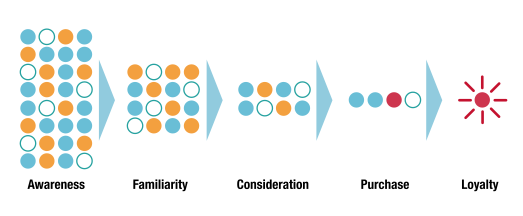
A buyer’s journey begins with awareness of the book’s existence – so how do you tell people about it?
Customer Reviews are written AFTER a sale, while a professional review is written BEFORE, and is part of the reason Amazon place paid reviews above the fold (the top part of the screen you see first).
While Customer Reviews will have a cumulative effect on buyers after they have reached your page, factors such as your book cover, author bio, book blurb, and Editorial Reviews are all part of the marketing package you need to sell books up front and get people to that URL and attracted to your product. Customer reviews simply enforce the professional opinion, and give the prospective buyer a last reassurance before buying your book.
Customer Reviews are not the selling tool. They are the peer confirmation just before purchase at the end of a buyer’s journey, not the beginning. The beginning is AWARENESS and that requires REACH.
MYTH I can build a mailing list as advised by a bunch of bloggers recently on well-known sites – I don’t need paid reviews.
TRUTH The concept of reach and awareness is behind this disinformation. And I suspect, it’s much easier to blog about than what we are discussing in this article. Mailing lists don’t work anymore in this hot, overcrowded market, and this advice is outdated and should stop being spread about as the catch-all solution.
About Mailing Lists Mania
Mailing lists work for some people for the following reasons:
1. If you have a book that’s in a niche so tiny that you’re bound to sell books, i.e. “How To Nurse Injured Jackdaws To Health” and your mailing list has the 200 jackdaw enthusiasts in the world who need this book. Still, you are only reaching a small number of people, once. Limited sales = 200 books.
2. You have a star/celebrity appeal such as authors like Michael Bunker or Tim Grahl – both close Hugh Howey friends/colleagues, and marketing experts. To achieve this, you will have to work around the clock giving hours of your time building a reputation, or be lucky enough to be in some way unique. This will take loads of energy and legwork. Are you prepared for that? I’m talking attendance at events all over the world, speaking at conferences, studying self-publishing, studying marketing… A lot of expenses, a lifestyle change, and much homework to do. To compare your situation right now without this legwork to Tim Grahl is fantastical. You can see his legwork listed here. This is what is needed.
3. Be lucky enough to already have a blog and now you’re peddling your books. People like Joanna Penn, Mike Balmaceda, and Derek Murphy are an example of authors who already blogged about publishing and related subjects and now use that blog to sell their wares. They are also hugely prolific and have plenty of products to talk about. If you don’t have this already, it’s doubtful you’ll get it now, because you needed it before you launched your book, in a big way. I can barely open an indie author website without one of these lovely people’s mugshots leaping out at me.
4. Have tons of friends, a church, or a club at your disposal in the real world who are happy to buy your book. This obviously only reaches a few hundred people for a one-off purchase in one period of time. So, a few hundred books sold one week. None the next. Limited sales of a few hundred books one time.
So remember, unless you are prolific like one of the people I mention above, you have ONE product to sell ONCE. How many emails can you send out without being spammy? Two? Three?
Mailchimp, the biggest provider of mailout services, run a survey constantly to see how many people open and click mailing lists by industry, across one-person setups to Fortune 500. You can see their chart here. Media and Publishing emails get only a 22.32% open rate, and the clicked links amount to only 4.59% of those. At best, you reach 22 out of 100 people with a mailing list, and only 1 person out of those will click. Once this source of sales is exhausted, you will be back to square one with sales and ranking.
How big is your mailing list? How many direct sales have you made? How many subscribers?
MYTH Libraries are just waiting for your book to be distributed so they can stock it.
TRUTH My kneejerk reaction to distribution in libraries is “Who cares?” Why?
The first point here of course is that most authors don’t bother with a hard copy version of their book these days – and neither do readers (hence rip-off book services offering first hard copies in bulk, then a pulping service some months later). But if you’re still that sort of author, let’s look at your chances. Libraries don’t have money for traditionally published books. Libraries close every day. They may see a list of self-published books in a catalogue, but do they have funds to spend on unknown authors just because you’re distributed? Probably not. Even if you were, how many people do you think will read your book?
Once the book is in the library, you are not advertising it. It’s just there, waiting. Nobody is going to advertise it for you.
Maybe there was a window in about 2008 when certain librarians may have been interested in self-published books, but with thousands (of crap ones) being thrown at them every day, it’s really outdated to think they will stock self-published books unless you have sales and reputation behind you.
Publishers Weekly talks about Jane Friedman’s opinion on library distribution in Oct 2015. I note this date.
“But Friedman cautions that just getting distribution through a large company that libraries use, such as OverDrive or Ingram, does not ensure that a title will be added to a library’s collection or get noticed by librarians. “You have to be visible to the library in other ways—through reviews, word of mouth, and major blogs in your genre,” she says. “In some ways, making your book known to libraries isn’t that different from promoting your book in general. A library needs to see some evidence or social proof that will help persuade them to add your book to their collection.””
Hmm, maybe a paid review on a reputable book site with loads of views would help with that social proof, huh, Jane? Pretty damn contrary to this argument here, only four months later!
Either way, you’re looking at one sale per library. Is it worth the effort? Probably not. Plus some libraries may stock your book after you drive there, pitch it, strongarm them, sell your soul, but only if you give it to them for free. So no sale, plus a bunch of people read your book at no profit to you, multiple times. So SPR doesn’t include any kind of library distribution in its review packages.
MYTH Paid reviews are too costly.
TRUTH Newsflash: All advertising costs money. A paid review is advertising. Doing it yourself is advertising. How many hours have you spent in front of your computer trying to find thirty people to review your book? Are any of their reviews 300-500 words long? Are they usable for marketing purposes, or have they just said your book is “amazing, wow, 🙂 xxx?”
So let’s say you spent 10 hours one day posting your book to forums and groups just like every other amateur schmuck. Let’s say you pay yourself the US minimum wage of $7.25 an hour as an author. So you just spent $72.50 on trying to get your book read by someone, anyone. No guarantees that anyone even looked at your post, buried among the other 50 billion author’s books all posting desperately to “book sites” that are actually just other authors like you. $72.50 is more than our Jump Start Review ($69), for which you’d get the 240,000 reach, posted to social media sites, tweeted out, and submitted to critic circles and library mailing lists, and you will have just clicked a “buy” button.
People often say “Kirkus is really expensive.” Well, it’s a pretty expensive service, but they are easily the number one site for reviews in the world. Their Google ranking is higher than any other blog for book reviews. They also provide essential marketing write-up for your book campaign. If you can afford it, it’s one to consider because you will have a permanent page with your book on it on one of the world’s best websites. The same is true for the other sites I listed in Paid Review Types 1. We have reputations and traffic every day.
See this as a lot of people having a chance to browse your book, permanently situated in a really good bookstore. We sometimes get comments on book reviews three or four years later, and someone says they like the look of the book. Permanent links on reputable book sites are worthwhile for sales because they are just that: permanent. Day in day out, opportunities for sales.
SPR keeps prices low on purpose, and we pay reviewers the going rate plus perks. For our top package of $289, let’s say my team members get $10 an hour each, which is around what someone working at Walgreens gets. They don’t get $10 an hour, some get more, some less depending on their seniority etc., but for argument’s sake, I worked out it takes me around 17 hours over 4 members of staff to get one book review published on our site, with all the artwork, and all the social media. That’s $170 straight off the bat before taxes and overheads minimum. This also does not reflect server maintenance and security fees. And we need to eat.
So ask yourself how many times you have sat there desperately trying to build your mailing list, get exposure on forums, and all the other near-useless “tips” bandied about and recycled without thought these days to indie authors, and you’ll easily see your time is money badly spent. Either this book is a career or a hobby to you, but either way, it will cost you in time, energy, and money if you don’t want your book to die. Taking professional book tools out of a limited armory in an oversaturated book market for the sake of as little as $69 seems foolish.
In the words of Red Adair, the legendary firefighter, “If you think it’s expensive to hire a professional to do the job, wait until you hire an amateur.”
Get an Editorial Review | Get Amazon Sales & Reviews | Get Edited | Get Beta Readers | Enter the SPR Book Awards | Other Marketing Services






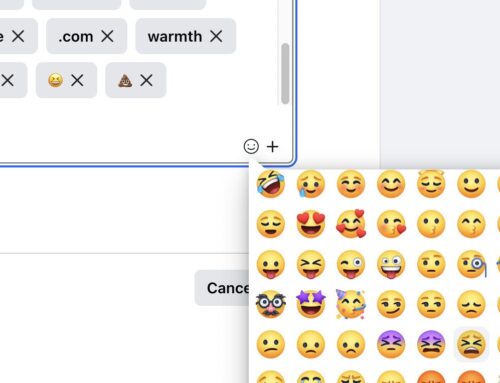


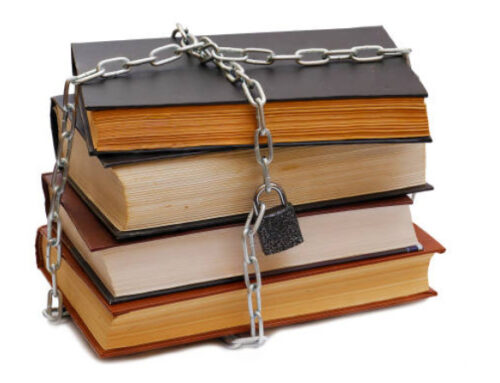



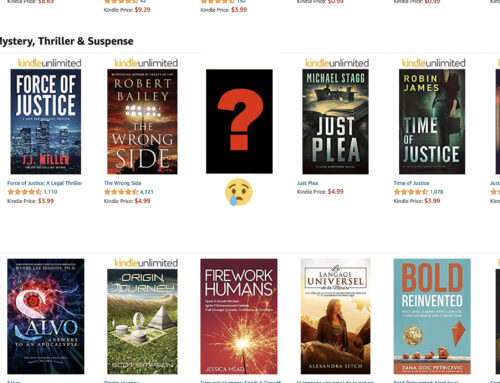
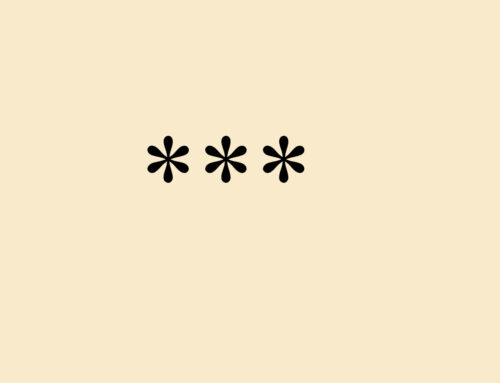
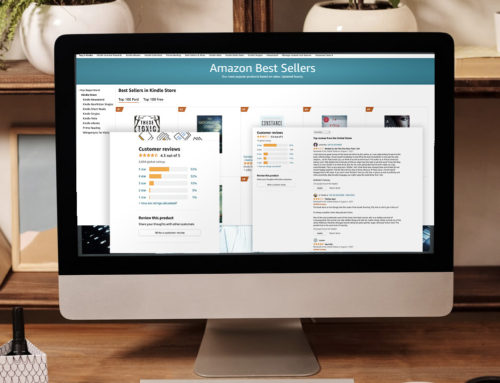




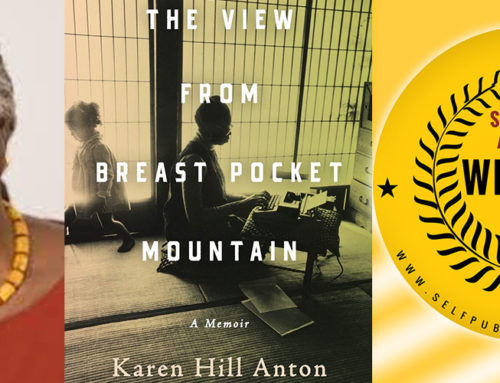
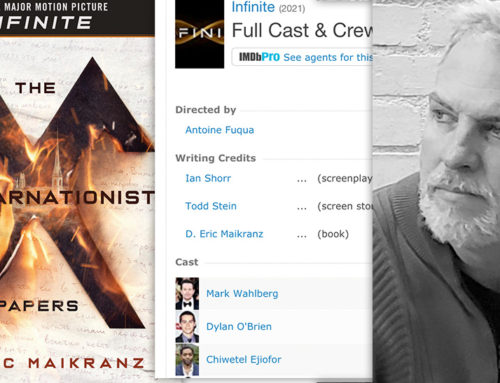
There’s nothing wrong with asking for and using cover blurbs from friends and family
if what they say will be appropriate to your book. Later on, if the
President or Oprah falls in love with your words, you can revise the
cover to incorporate the new comments.
My first self-published book was I Only Flunk My Brightest Students: stories from school and real life (2008). It deals with my life. It made perfect sense to use blurbs from people who know me, rather than a paid reviewer of some distant Nobel Prize winner.
The book is funny. Identifying Howard Krosnick, the source of my front cover
blurb, as “author’s classmate since first grade” is almost a parody of
the traditional stuffy IDs (“professor of Indo-Eurasion folk medicine at
the University of Guatemala), and reinforces the mood of the book.
Howie said, “I couldn’t stop reading. I couldn’t stop laughing.” blurbs
don’t get better than that.
Stories I’d Tell My Children (but maybe not until they’re adults) is an updated replacement for the ‘flunk’ book. It has a fantastic cover blurb which says, “This book is so funny that I nearly peed in my pants. My girlfriend didn’t think it was funny, so I got a new girlfriend.”
The blurber, Nicholas Santiago, is someone I know through business. His
words are sufficient. I see no need to explain who he is, and I doubt
that a paid reviewer could have written a better recommendation. I received
“five stars” and some nice words from the Midwest Book Review — but those words are not as funny as Nick’s words. I put the Midwest blurb on the back cover.
There’s nothing wrong with it, but it won’t help you sell books. I looked at your blurb for your latest book on Amazon, and it isn’t a blurb, it’s a list of contents and ramblings, and does nothing for your book page. It also has grammatical errors. This is one of the reasons why your rankings are so low. Maybe you don’t mind not selling books, but I think a lot of authors aim to make bestseller lists, so it’s important to come across as a professional on your book page.
Amazon yelps, stomps its feet, and threatens severe sanctions if friends or relatives review Jane Little’s modest, self-published book. Yet the mainstream book industry treats almost identical policies as normal business practices. By hook or crook, the book industry gets the blurbs and reviews it needs to sell its books. Publishers expect their authors to write blubs for their other authors. Academics consider doing reviews for colleagues as a matter of professional courtesy. C. S. Lewis, for instance, provided one of the first reviews for his friend Tolkien’s The Hobbit (1937).
https://www.theparisreview.org/blog/2013/11/19/c-s-lewis-reviews-the-hobbit-1937/
Is Amazon going to sanction Simon & Schuster or Oxford University Press? I think not. Amazon’s policies are invariably those of a bully. If you’re powerful, it’ll fall all over itself to keep you pleased. If you’re not, it plays the strutting dictator, telling you what you can or cannot do. It reflects the culture of Old Prussia, of whom it was said, that a Prussian is “either at your throat or at your feet.” If you want to understand why Nazism could do so much evil using the German people, that’s the key.
That matters immensely. Samuel Johnson, who wrote the first dictionary for English, noted that courage is the necessary virtue. Without it, all the other virtues, such as justice and love, come to naught. It takes courage to express them.
In much the same manner, bullying is the necessary vice. Adopt it, and other vices soon follow. Those so afflicted find lust, envy, and wrath, more appealing. Historically, we saw that with the 1938 Munich Agreement, where the British and French bowed before Hitler and betrayed the Czechs forcing them to give up critical territory on which their nation’s defenses depended. Of that, Churchill warned:
“And do not suppose that this is the end. This is only the beginning of the reckoning. This is only the first sip, the first foretaste of a bitter cup which will be proffered to us year by year unless by a supreme recovery of moral health and martial vigour, we arise again and take our stand for freedom as in the olden time.”
Much is said among authors and publishers about the danger that Amazon poses to this or that aspect of what they do. But few seem to notice the long-term dangers posed by that one single attribute, bullying, which that lies at the heart of Amazon’s corporate culture. There’s where our real danger lies.
–Michael W. Perry, co-author of Lily’s Ride, based on a bestselling 1870s novel about teen girl who stands up to the Klan in post-Civil-War North Carolina